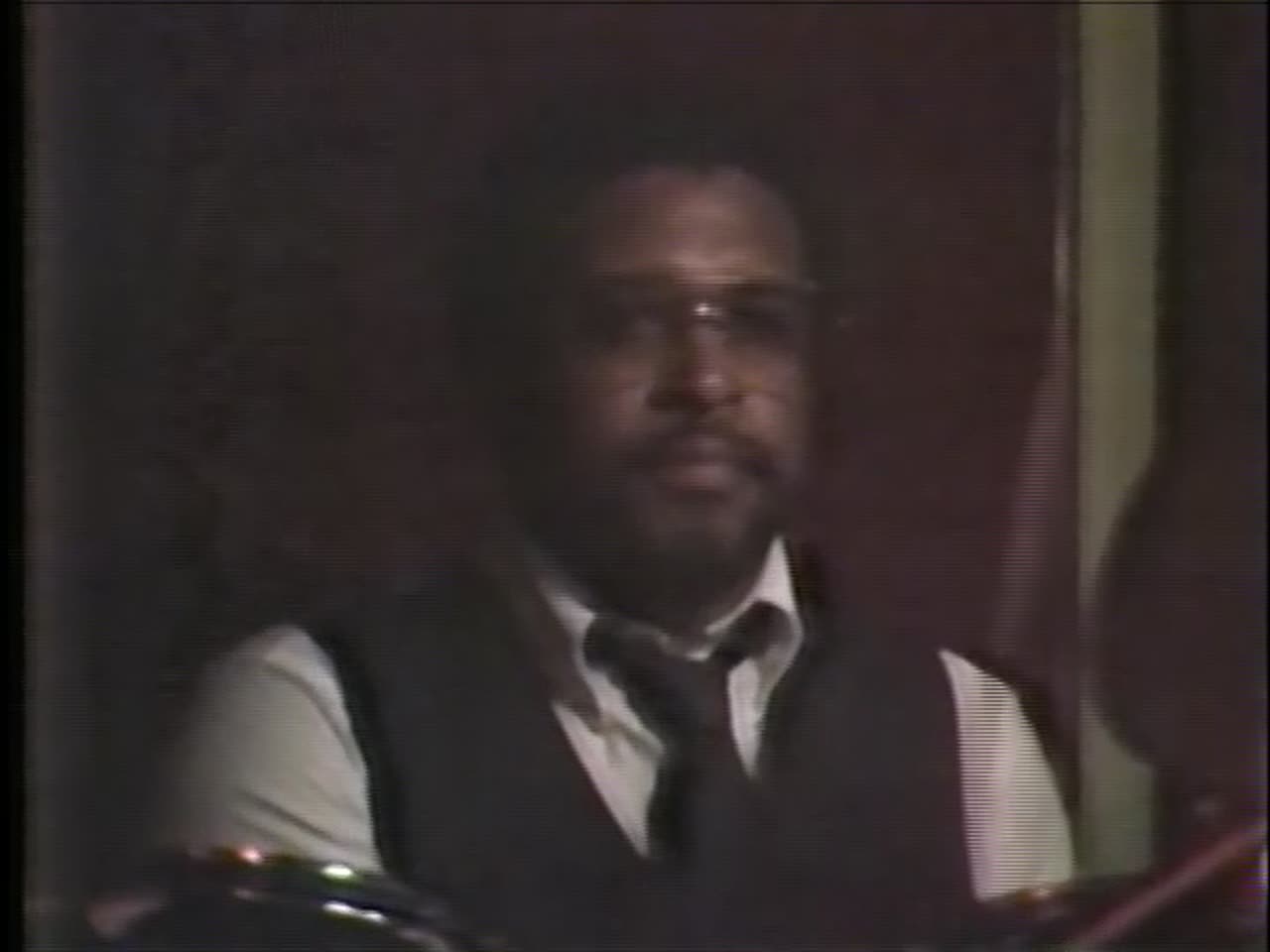
History of Jazz in Indianapolis
Rag to Bop: A Memoir of Indianapolis Jazz
Video (25:15)
Other Identifier: IBHA.HCC.0035
Notes by Chloe Tod, Broadcast Media Analysis, Spring 2022
Howard Caldwell travels to Indianapolis to interview jazz musicians.
0:01 video starts with jazz musicians playing music, multiple shots
0:14 Howard Caldwell makes introduction
0:20 stops talking and continues listening to music by Melvin Sparks Quartet, taking place at 54th and College
0:30 establishing shot of jazz bar, then Howard Caldwell talks about history of jazz in Indianapolis
0:53 old footage of cars and trams in the streets of Indianapolis, Howard Caldwell V.O. begins
01:03 rag posters shown in succession
01:06 photos of ragtime composers
01:13 Duncan Schiedt, writer and jazz historian talks about ragtime musician (Amos Seidel?)
01:21 V.O of Schiedt, photo of musician
1:23 footage of Apollo theater
01:26 sheet music
01:35 fades back to Schiedt, who continues to talk about self-expression via jazz, talks about how ragtime peaked in 1880s and 1890s and died out after WW1, replaced by jazz
01:56 V.O. of Caldwell, photos of Russell Smith and J. Russell Robinson, who were jazz composers
02:04 Princess Rag by Smith shown and Robinson’s Eccentric Rag
02:17 man playing piano, various shots
02:36 Jared Carter, a ragtime musician talking about how you can “rag” any piece of music
03:05 man playing guitar, V.O of Caldwell talking about jazz’s development
03:37 shows Yank Rachell, a famous blues player, playing guitar and singing
03:54 Yank Rachell V.O over performance, multiple shots
04:50 old black and white photos of boat set to music
04:59 Caldwell V.O talking about jazz origin
05:02 photos of town
*05:03 V.O. of Caldwell talking about how jazz originated in New Orleans
05:08 Incue: “The first jazz record was made on February 6th, 1917.”
05:56 Outcue: “…of the jazz age in Indianapolis.”
talks about how the first jazz record inspired the entire country to embrace the music
06:08 various photos from the 20s
06:18 Caldwell V.O about the 20s being known as the jazz age
06:41 V.O continued about Hoagy Carmichael being the most famous jazz composer in the state
06:51 footage of WW1 soldiers getting off of a train, marching, quote of Carmichael in V.O.
07:01 more pictures from the era
07:11 V.O. tells us jazz was made in this era for dance halls
07:33 tells us how Indianapolis was fond of jazz in the 20s, who’s photos of bands and people dancing in clubs, lists various bands, lists clubs
08:17 tells us dances were often held at hotels too, such as the Marrott
08:25 dances held at private clubs as well, such as the Columbia and the Indianapolis Athletic club
08:37 Raymond Valentine compares Indianapolis to Broadway and recollects his experience
09:01 photos of Valentine and his bandmates, Valentines continues to recount his experience all the while
10:17 Duncan Schiedt talks about the multitude of Indianapolis bands during the 20s
10:31 photos of (Something 5), which was an Indiana band at the time, a white jazz band, Schiedt talks about how audiences could only tolerate jazz at certain times
11:46 Reagan Carey, a retired jazz musician talks about the prevalence of bands and the popularity of dances on college campuses
12:17 old photos of Great Depression and poverty, Caldwell V.O. talks about how the economic decline killed off many jazz groups, but jazz did not disappear from the city, blues become very prominent
12:53 Crimson Serenade was a new band that became a staple for the Columbia club in the 30s
13:00 Reagan Carey talks about how hard it was for musicians during the Depression
13:26 Caldwell talks about the Brown Buddies
13:30 James Wharton, a jazz pianist, talks about his band
14:32 Caldwell V.O. going to commercial break
14:44 Caldwell V.O. and footage about the swing era in the 30s
14:55 Hampton Family band was swing group in Indianapolis
15:07 Aletra Hampton, the pianist, discusses the importance of their music in the city, the style of their music was family-oriented
15:45 Caldwell V.O. over photos of Hampton family, talks about how they would help budding musicians by practicing with them
15:58 Virtue Hampton, the upright bassist, talks about people coming to her family’s house for practice
*16:17 V.O. of Caldwell and photos of the Hamptons
16:18 Incue: “The Hamptons helped train many people who later became professional musicians.”
18:05 Outcue: “…and could fit in.”
talks about how the Hampton’s influence reverberated through the Indianapolis community via musicians like David Young and Russell Brown.
18:06 V.O. of Caldwell over photos over various jazz musicians who initiated new style of jazz; bebop
18:24 David Young talking about bebop’s influence on him
18:35 Caldwell V.O. about local players who had studied under Russell Brown and Hampton family, they helped to spread bebop, J.J. Johnson is most famous
19:00 Photo of J.J. Johnson fades to David Barker the chairman of the jazz department at Indiana University. He attributes success of bebop to Johnson.
19:17 V.O of Caldwell over photos, talks about how focus of bebop was for listening and not dancing
19:31 Caldwell at table, talking about Wes Montgomery
19:45 V.O. of Caldwell about Wes Montgomery and his influence on Indianapolis
20:21 footage of David Baker’s 21st Century Bebop Band performing, V.O. of David Baker talking about how jazz became so successful in the city, various shots of saxophone player
22:14 jazz concert in Indianapolis, the Indy All Stars at the Black Expo in July 6, 1984, various shots of band and of viewers
22:50 Caldwell V.O. talking about how jazz is still apart of Indianapolis
23:13 title card and ending credits